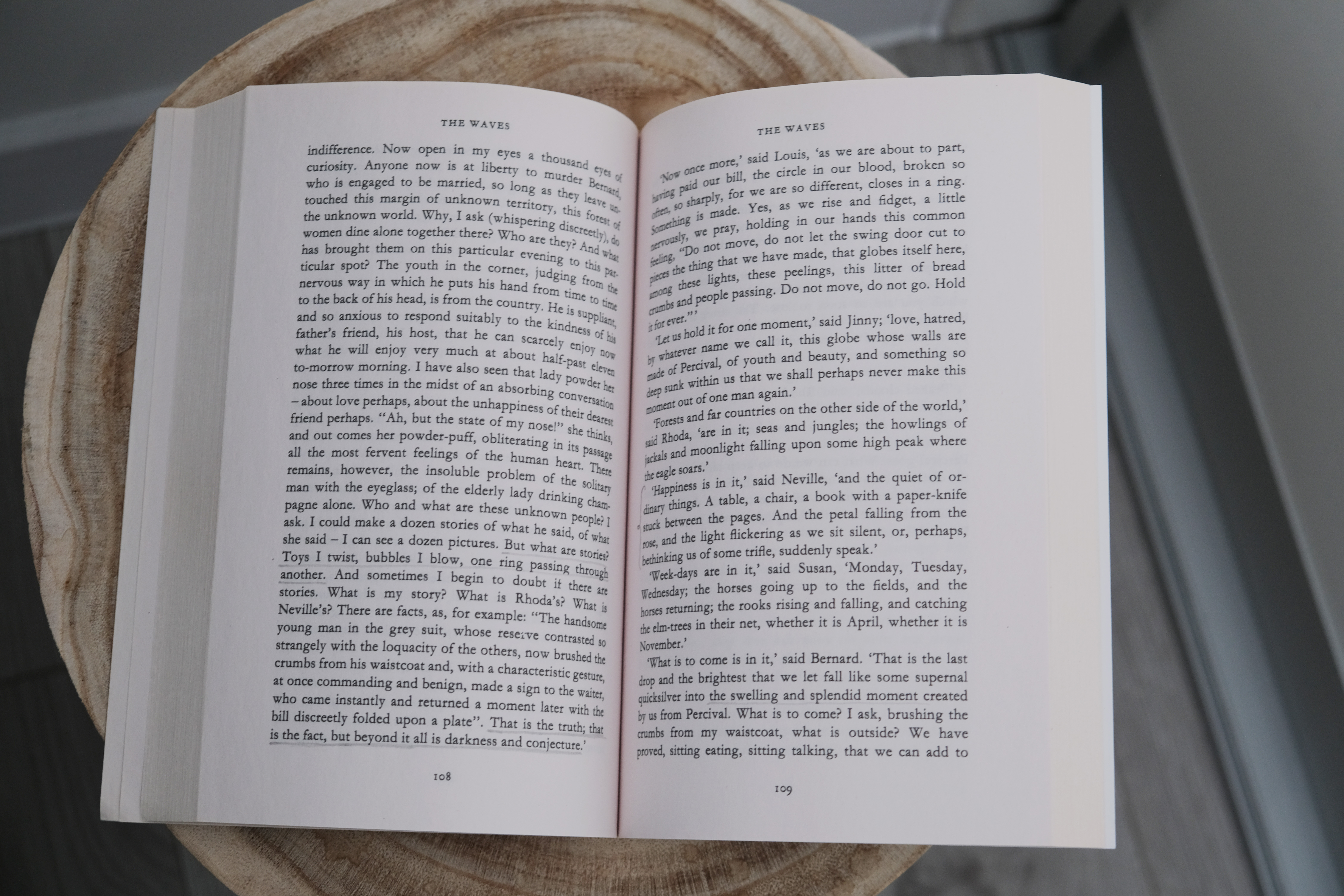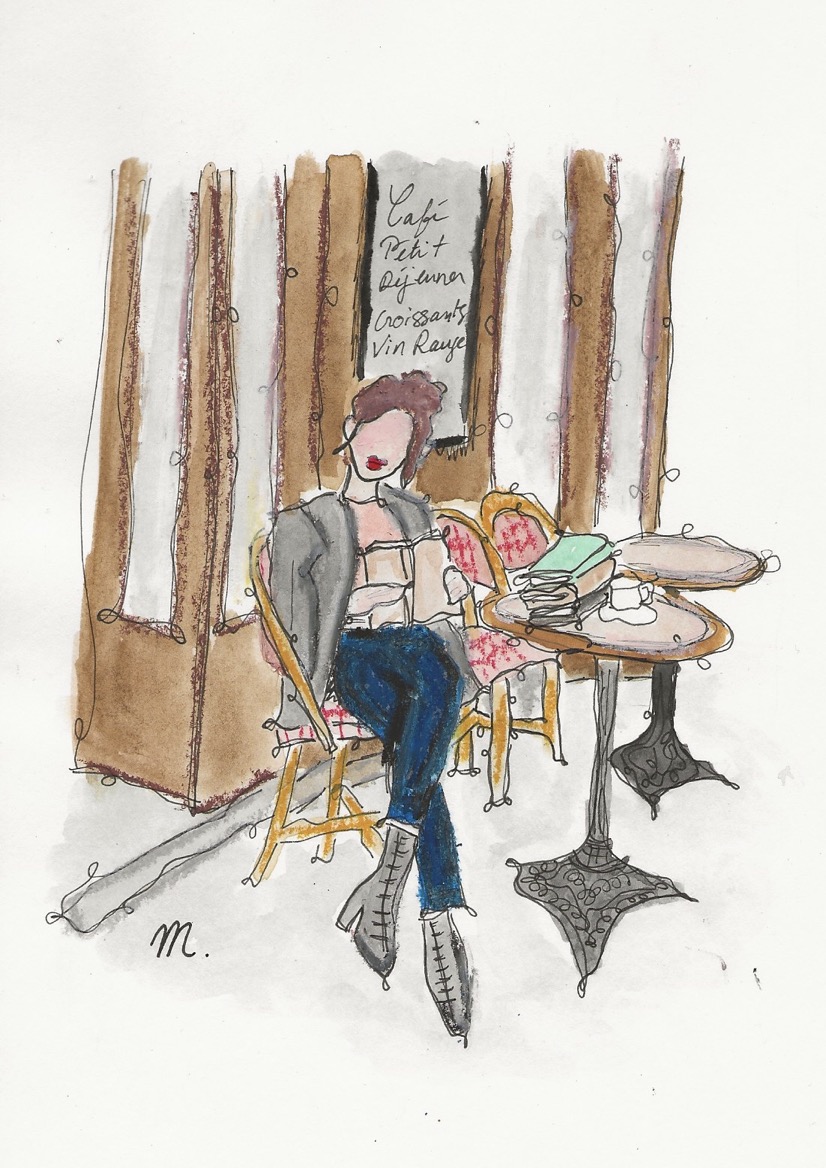february 2022
je lis trop
paper dolls
When I was little, I didn’t play with dolls much. I remember paper dolls, though – I remember coloring their wardrobe items, cutting them out, folding the small edges of paper so those freshly colored items cling safely to the doll of my choosing. Changing their clothes was exciting – style and aesthetics weren’t part of my vocabulary yet, but the ideas behind these words floated in my mind in their vague, childish forms, while I was trying to determine which dress my paper doll would like to wear next.
A few months ago, my mom showed me the boxes of childhood things, which she had picked up from my grandfather’s. When I was sifting through the coloring books with paper dolls, what surprised me is that each one of them had something to say – their backs were full of statements. My handwriting was imbalanced, messy, but the tone was assured. Those were mundane sentences; they included only what I myself, as a five-year-old, had the opportunity of experiencing. My paper dolls expressed thoughts on food, parents, and hobbies. Some of those statements had more meaning, some of them less, but no girl remained mute. This was the first indication of my interest in fashion and language, and how these two can go hand in hand.

Reading Virginia Woolf
I have grown up; the statements I put down on paper have evolved from the sphere of food or parents. They are more abstract, and the tone is less assured. “I force myself to state, if only in one line of unwritten poetry, this moment” – this is Louis from ’s The Waves. I do not write poetry, so my version, perhaps, would be: “I force myself to state, even in one line of unwritten sentence, this moment”. And I do try to commit those unwritten musings to paper, as often as I can. Whenever I read Virginia Woolf, this wish becomes more urgent, more pronounced.
The Waves is a wonderful portrayal of the inner world, and it is one of my most cherished books. It has six characters – Bernard, Susan, Rhoda, Neville, Jinny, and Louis. There are hints as to what’s happening in their lives, but those hints from material reality are never the focus, rather the building pieces the world supplies them in order to create evocative worlds. We come to know them from how they choose to express themselves, from the things they put in the spotlight. A sense of ease and playfulness permeates the book, with the gentle sound of waves rolling in the background. I like how even simple observations can spur the curiosity for life. No detail is too small: hot towels, white china, a dress with red threads, purple buttons on the bodice, bottle-green engine of a train, a shoe-string, streets laced with telegraph wires…
I feel that language and imagination have given me access to beauty. Over the years I’ve come to known words as a building force, a means to construct an identity. Words can create a protective layer against the world, a shell to retreat into. They can also have a pleasantly destructive power – this is my favorite example, which I have underlined multiple times: “I will make images of all the things I hate most and bury them in the ground.” The Waves is a triumphant demonstration of all this; a book I plan to read again and again.

Favorite coffee table book

An early winter morning in Paris
“Sometimes I am immersed in my writing, ecstatic; sometimes I am only able to write one paragraph. On certain days I hate that paragraph.” It is probably too early to tell, but ’s Indelicacy might be one of the most memorable books for me this year. It’s about a woman who works as a cleaning lady at the museum and starts writing about the paintings she sees every day. This novel has several topics worthy of further exploration, but I will limit myself to the topic of writing. Understanding why one writes is a popular topic, more often than not wrapped in thick layers of philosophizing. I don’t think it’s the case with Indelicacy. The novel is short, the chapters are short, and the thoughts contained within them are alluringly simple.

The story’s narrator articulates some of the plainest, most beautiful things on writing that are nevertheless challenging to put one’s finger on. While I was reading her reflections, I thought: I have felt this often, but I never knew how to write about it (or if it’s worth writing about at all). For example, the simple joy of having created something, even if it’s just a paragraph. Or that feeling when you stare at your words on the page, their incompleteness is blatant, but you have no idea what to add and how to give them the full meaning (“The words sat there so innocently. Other words were still meant to surround them.”) Or that uplifting feeling which is fueled by knowing that something is in the works, even if you’re not sitting at your desk and writing just yet. Or that wish to give everything to your writing, hoping that your writing will inform everything about your personality (“I wanted people to see it in the way I ate things and acted.”) Reading about these simple things was pleasant, reassuring.
Over the years, this activity of writing statements has grown more complicated than the five-year-old version of me could’ve imagined. But I know one thing – I must take something from reality as my starting point, and only then wrap a story around it. I’ve always been curious what these starting points could be. In Indelicacy, the narrator looks at paintings and then writes about them. It can be purely the description of that painting but it can also lead to more personal things. In ’s Whereabouts – this book could appeal to those who appreciate the minimalism of short, fragmented stories – the starting point is location. It’s interesting to see how a certain place, a scene on a balcony or at a ticket counter, can lead the writer to reveal her most intimate thoughts and memories.

Paper dolls in a museum exhibition

Looking at images in a book
I must attribute this story (and the fact that I’ve come to think about paper dolls at all) to a fashion exhibition that I visited last year in Musée Yves Saint Laurent. It was an exhibition on haute couture fabrics and the very first room had paper dolls in them. Those were, of course, much more refined than mine – they were the designer’s sketches, after all. Standing in front of them brought a wave of memories. During the visit, I bought ’s book (not related to this particular exhibition) called Yves Saint Laurent 1971: La collection du scandale. I keep it in my room and I flip through its pages every other day, peruse the words and images. It reminds me of when I discovered fashion magazines and looking at runway pictures was just as pleasant as playing with my paper dolls.
P.S. If I had a paper doll today, I could write this on her back (from The Waves): “I should put on my red dress and it would be thin as a veil, and would wind about my body, and billow out as I came into the room, pirouetting.”
